- Home
- Hugh Howey
Resist Page 21
Resist Read online
Page 21
Alexoi’s warm brown eyes were sympathetic. “No one wanted the criminal known only by her pseudonym Sybl to be—”
Director Reichs cut Alexoi off. “We must not think of what her consequences were,” he said. “Of course the Prime Chancellor didn’t want to use capital punishment against her, but more than that, no one in the Citizenry wanted her to commit her crimes.”
“Exactly,” Alexoi confirmed. “Her actions led to all the unpleasantness.”
Billie threw up her hands, almost hitting Penny in the face. “‘Unpleasantness?!’” she said. “That’s what they call a public execution?”
It had been the first execution of the Prime Chancellor’s career. Or, at least, the first one shown during the mandatory viewing program. Alexoi Dempsley had come on the screen, warning parents that while the scene they were about to view would be graphic, all children were still required to view it.
But it wasn’t just the execution that could be labeled “unpleasant.” The aftermath was still lingering.
The vid screen shifted scenes. Instead of Alexoi and Director Reichs seated in an office at the Capitol, the vid screen replayed the closing of the National Gallery, with the words of the Art Edict spoken in a soothing voice.
“Are they going to take it back?” Billie asked.
Penny shook her head. She doubted that the Art Edict would ever be overturned.
The vid screen shifted back to Alexoi and Director Reichs. “Some call the Art Edict a banishment of art,” Alexoi said gravely.
Director Reichs shook his head. “The Prime Chancellor has no interest in banning art,” he said, chuckling.
“Could have fooled me,” Billie muttered. Penny shushed her.
“Yes, art in all forms was temporarily banned,” Director Reichs said, gently stressing the word. “But that was for the public’s safety, of course.”
Billie threw up her hands. “How?” she screamed at the vid screen. “How is banning art for our safety?!”
“Billie,” Penny said in a low voice.
Billie sat back down, sobered. They were both artists—recent graduates of the Citizenry Art School, the last graduates before the Art Edict. They had been counting on jobs that had been banned by the new law. Not even commercial art was allowed; all advertisements since the Edict were text only. Both girls were broke, barely scraping by, and if the Art Edict wasn’t overturned soon, they would have to sign up for shift work.
But they also knew better than to protest.
First, the galleries and art schools had closed. A temporary measure, or so they were told. Then the books had been confiscated, from silly little primers with drawings of puppies for children, to historical books, heavy with glossy pages, illuminating paintings from hundreds of years ago. Few people noticed or cared; old-fashioned books were mostly just a collector’s item. But everyone noticed when the net pages with art had been blocked, each illustration or photograph of a sculpture replaced by a white box with a black “X” through it. Finally, homes were inspected. Vid pics were wiped—again, a temporary measure, they said—and physical forms of art, even family photographs, were confiscated. There were whispers that other forms of art, like fashion and music—would soon be regulated as well, but for now, the Art Edict limited only visual arts.
Penny had never really realized how much art was in the world until it disappeared from her life. She’d taken for granted the old peeling wallpaper illustrated with bunnies and trees in the coffee shop she liked. She’d barely noticed the scrolling photographs of the nation that filled the vid screen when it wasn’t in use. Advertisements that had tried too hard to be flashy with models and vids were suddenly dull with nothing but text, even the colors limited to reduce the chance of being labeled “art.”
Billie rubbed her forearm, where a large black square stood against her tanned skin. Nanobot tattoos had also been regulated with the Art Edict. Billie had cursed wildly, but there was nothing she could do. Nano tats used a special ink that could change the image and color of the design, and Billie had loved hers. Some days she’d had her tattoo be a rainbow of watercolors, abstract and beautiful, all up and down her arm. Other days she’d animate the tattoo; she was fond of a kitten batting at a ball of yarn around her ankle. When she had her tattoo display a snake around her neck, Penny had known not to even attempt talking to her.
But now Billie’s nano tat—all nano tats—were nothing but a square black box. The government had overridden the tat frequencies, and while they couldn’t remove the ink from the people’s skin, they could immobilize the tats.
Penny had gotten a nano tat a few years ago at the same time as her boyfriend, but she hadn’t used her own in years. When she and Toni had broken up her junior year, she’d deactivated her tat. It had reminded her too much of his impulsive love of color and the way they’d sync their tats so that even their skin displayed their love. Although Penny couldn’t remove the tat forever, deactivating it had put it offline and hidden the traces of nano ink so that the remnants were nearly invisible. She had relished excising Toni from her skin and her life, although she never could have guessed that deactivating the tat prior to the Art Edict would mean she, unlike Billie and thousands of others, wouldn’t have to wear a black box on her arm like a badge of shame.
Director Reichs continued. “While the sweeping—but temporary—banishment of art was in place, it was done in order to protect us.”
Alexoi’s smile deepened, and Penny found her breath catching despite herself. “You mentioned temporary?”
Director Reichs grinned. “Yes. We’ve had time to further explore the nature of art and what is acceptable for the Citizenry. This was always the Prime Chancellor’s intent. You’ll see over the next few weeks art returning to the people.”
Billie screamed so loudly that Penny almost fell off the couch. “Look!” she said, squealing and showing her arm. The black square of her nano tat dissolved, the ink spreading out in a cloud and the reboot display showing on her skin. Billie tapped her wrist, and the nano tat started to show new patterns.
“Yours too?” Billie asked, looking up at Penny excitedly.
Penny tugged down her shirt. With the nano tat deactivated, it hadn’t come online as Billie’s had. Penny found that she wanted to keep it that way. Art had been taken from her; she didn’t want it back on her body at the government’s whim. With it offline, it was still, somehow, hers and hers alone.
“Ugh, you’re so boring,” Billie grumbled when Penny didn’t turn her nano tat back on.
“We’re rolling out acceptable art over the next few weeks, and we’ll be celebrating this with the opening of a new gallery,” Director Reichs continued.
“Acceptable art?” Alexoi asked, echoing Penny’s thoughts.
Director Reichs turned to him. “Yes,” he said. “Art should not be political. It should be beautiful. And we will strive to ensure that beauty is what graces our great nation.”
Alexoi adopted a more serious tone of voice. “And to those, like Sybl, who claimed that all art is political?”
Director Reichs laughed, and Alexoi joined in almost immediately. “Well, that’s just ridiculous. Art, at its very basic definition, is not political in the least. Art is not propaganda. Art is higher than that. Art is above politics.”
“Such as a landscape?” Alexoi suggested.
“Indeed. All the artists from the past who exhibited true art never touched on politics.” Director Reichs frowned. “Of course, some artists strayed from their purpose, creating works that were no longer art. We can all agree, for example, that the Renaissance made a mistake to illustrate so many scenes focused on religion.”
“Of course,” Alexoi said immediately. “And as we know, even art from the Renaissance that wasn’t religious held problems.”
“Ah, ah, ah,” Director Reichs shook his finger, his tone admonishing. “That’s not quite fair, Alexoi. You’re referring, I presume, to the Mona Lisa?”
Alexoi nodded, a look of unease ba
rely visible on his face. They’ve gone off script, Penny thought.
“The Mona Lisa is not political in and of itself. Sybl made it political. Yet another of her crimes—not only did she spread lies through graffiti, she corrupted good art and turned it into propaganda.” Director Reichs shook his head mournfully. “Da Vinci’s masterpiece is the greatest loss to the Citizenry, if you’ll allow an old man his foibles.”
Penny bit her lip so hard she tasted blood. Public outcry for the burning of the Mona Lisa had been louder than Sybl’s execution—hundreds of art lovers had been arrested after that. This is why they’re doing this, Penny realized. The government knew they’d created a powder keg by destroying art that had existed for a millennium. They had to contain the problem. They had to appease the people.
“True art is above dirty politics,” Director Reichs continued. “And to show the Citizenry what true art is, we’ll be opening a new gallery, one piece at a time.”
“Oh?” Alexoi winked at the camera; everyone in the Citizenry was in on the joke that he knew what was happening and was merely leading Director Reichs on.
Director Reichs turned to the audience, and for a moment, Penny felt that he was staring directly at her. “We’ve narrowed down a list of art students, recent graduates from the Citizenry Art School. Our first national artist will be selected soon to paint the Prime Chancellor’s portrait. The painting will be unveiled a month from now, followed by an art celebration as we open the new National Gallery!”
The rest of the mandatory program hour was far tamer, with alerts on travel mandates, information on what protection to wear before going outside the next day, and a fluff piece on some schoolchildren. During the Prime Chancellor’s closing remarks, Penny’s wrist unit buzzed.
She glanced down at it, then her head whipped to Billie. Her roommate was still preoccupied with playing with her nano tat, but Penny could see that Billie’s wrist unit had no new message.
Penny scrolled through the message quickly, her eyes widening in surprise. She knew from the program that the list of artists was being culled from recent graduates, but she’d never imagined that she would actually be one of those selected.
Penny was to appear at a certain address—the location of the new National Gallery—at eight in the morning. Although the message was shown as an invitation, there was very clearly no way to decline; in fact, the message concluded with an official statement citing the Summons Law—anyone who did not answer a summons would be arrested.
Her stomach twisted. The Prime Chancellor was going to redefine what art was, and Penny might be the one to hold the brush.
PENNY RECOGNIZED THE building as soon as she arrived. She squinted through the acid rain shield over her head at the brick building, recently refinished with new solar paint.
This had been the location of one of Sybl’s most iconic paintings. And the reason why the government burned da Vinci’s Mona Lisa.
Rain drizzled over her faceplate as Penny stared up at the building. It was different now—not just the solar paint, but also a new balcony had been installed, changing the shape of the wall. But Penny knew where the dozens of stenciled people had been painted. Her eyes moved across the building. Sybl had painted men and women, children, even a few dogs and a cat, all boldly looking over the avenue, many times larger than life. And each face, from the tallest man to the smallest puppy, had a perfect replica of the Mona Lisa smile smeared over their lips.
This was the painting that had moved Sybl from a nuisance to a political dissident. While her other graffiti had been considered rude, even shocking, it was the series of Mona Lisa smiles, tacked across empty-eyed children, that struck the truest chord.
Penny turned slowly on her heel. The wide avenue stretched a full kilometer without breaking, perfectly framing the Capitol building. Sybl had known this when she scaled the wall. She purposefully painted the crowd to stare down the Capitol, to smile meekly.
Complacently.
The art school hadn’t been closed yet when Sybl had painted the Mona Lisa smiles. Penny had had a professor whose critique showed how much she actually liked the rogue artist. “See the way they look to our government and smile, each smile exactly duplicated like the last, no other expression? Sybl is pointing out how willing we are to see what the government is doing and make no protest at all!”
The professor was fired a week later. Or, at least, she was gone.
The Mona Lisa smile had been catchy—instantly recognizable, not just because of the fame of the old original, but because those twitched-up, closed-lip expressions so perfectly encapsulated silence. “The Mona Lisa knows something; can’t you see?” Penny’s professor had said when her students hadn’t appreciated Sybl’s art. “But her mouth is closed. We know what’s happening. And yet we’re silent, too.”
The professor’s replacement had moved quickly to digital art studies.
The wall was now bland, all traces of Sybl’s graffiti gone. There—where a little girl holding a red balloon, her face disproportionately eerie with the Mona Lisa smile—exactly where that little girl had been, there was now a small bump in the solar paint.
A scanner droid.
Penny was being watched. Everyone was being watched.
Penny turned to the stairs, heading inside.
IF THERE WERE more interviewees here, Penny never saw them. She was directed to a large, windowless room. Near the door was a desk with a chair behind it and one in front of it. On the other side of the room was an artist work station, similar to what she’d used for her classical studies class at university. Penny’s fingers ached to take up a brush. After the university closed, she couldn’t even afford proper paints to practice, and then paints had been banished.
A woman with a motherly smile and pale, gray-red hair entered, a folder in her hand. “Thank you for meeting with us,” she said with sincere warmth.
“It’s my honor,” Penny replied. She took her chair in front of the desk after the woman sat.
“I am Ms. Slunki, assistant to the Head Director of Art, Lev Reichs.”
She very clearly waited for Penny to appreciate her position. After Penny offered a closed-lip smile in admiration, Ms. Slunki adjusted her folder on the desk.
“Your former professors recommended your portraiture very highly,” Ms. Slunki said.
“It was my favorite subject,” Penny offered. Her eyes darted back to the easel.
Ms. Slunki grinned indulgently. “Would you like to—?” Before she finished asking, Penny was nodding her head vigorously. “Come with me.”
Ms. Slunki stood and led Penny to the easel. An array of tools and supplies were laid out on the work station. Ms. Slunki activated the hologram display in the center of the station.
This was a far better unit than the ones used at university. The figure displayed in light was vivid and clear, even when Penny zoomed in to see the details of the face of the Prime Chancellor.
“We want a portrait of our dear leader,” Ms. Slunki said, “as you know from last night’s program. Go ahead and start sketching while I conduct the rest of the interview.”
Ms. Slunki rattled off easy questions, which Penny answered immediately. Her full name and identification had been verified when she scanned in after her arrival, but Ms. Slunki’s questions were more specific. What did Penny think of art in general? What were her favorite pieces? Why did she pursue art as a career? Did she hope to join the commercial field, or had she set her heart to something else?
Meanwhile, Penny adjusted the holographic model of the Prime Chancellor, her eye already seeing him as a subject, not the leader of the Citizenry. She brought up a chair, and had the Prime Chancellor sit, but that didn’t suit him. She swept her hand to the left, deleting the chair, then frowned. He seemed aggressive when he stood, too aware of his power, too obvious. Penny brought back the chair with a wave of her hand, but adjusted it so that it directly faced her. It was the profile where the Prime Chancellor looked too strong; when she had the
holographic model sit and stare directly at her, there was…
Yes. There was honesty there. That was the position she would paint the Prime Chancellor in.
Decision made, Penny started sketching. She used a vid screen first, blocking the initial sketch out. Penny had moved to graphite and paper before she realized Ms. Slunki was gone.
How long had she been alone? She vaguely recalled Ms. Slunki excusing herself but had lost all sense of time.
Penny had finished prepping the main canvas when she became aware of someone else in the room.
“Don’t let me interrupt.” The deep male voice was certainly not Ms. Slunki, and yet Penny recognized it. She turned.
“Director Reichs,” she said.
He smiled at her and took a step closer. “Interesting that you chose to show the Prime Chancellor sitting.”
“He seemed more personable this way.”
Director Reichs nodded, agreeing. “And you’re a quick artist. That’s good. We want to stage the grand opening in a month.”
Penny’s heartbeat ratcheted up. Did this mean she was already selected to create the portrait? Surely it wouldn’t be that simple?
Director Reichs strolled closer, peering over Penny’s shoulder at the primed canvas. “You’d be surprised how hard it is to find qualified artists these days,” he said, his voice low and near her ear. “We’ve already dismissed half your fellow applicants.”
Director Reichs strolled away, creating a rhythm between his words and his footsteps that Penny found entrancing, almost distracting. “I must confess; I don’t understand your generation.” He sounded exasperated, a grandfather impatient with his grandchildren. “Art just—it just is. Defacing it, corrupting it with these other meanings—”
“How could anyone do that to the Mona Lisa?” Penny said, mostly under her breath. The words echoed Toni’s, just before they’d broken up. She’d almost forgotten the old fights they’d had about Sybl and art and politics.

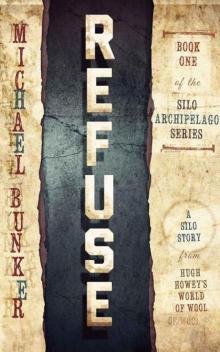 Refuse (The Silo Archipelago Series Book 1)
Refuse (The Silo Archipelago Series Book 1)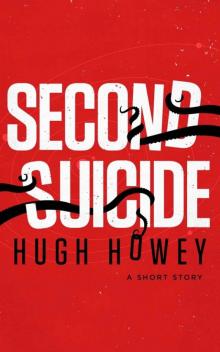 Second Suicide: A Short Story
Second Suicide: A Short Story Machine Learning: New and Collected Stories
Machine Learning: New and Collected Stories The Walk Up Nameless Ridge
The Walk Up Nameless Ridge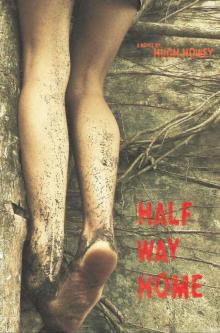 Half Way Home
Half Way Home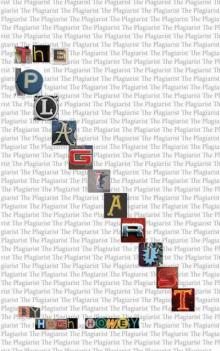 The Plagiarist
The Plagiarist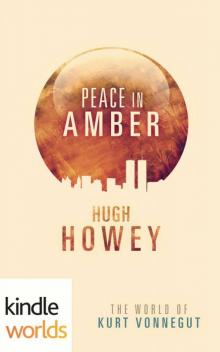 Peace in Amber
Peace in Amber First Shift: Legacy
First Shift: Legacy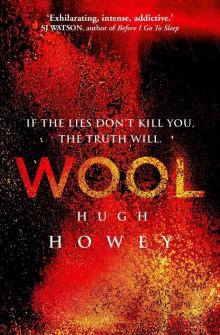 Wool
Wool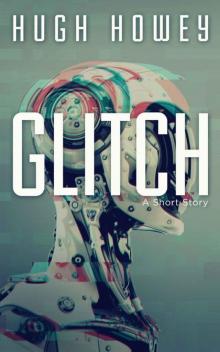 Glitch
Glitch Shift
Shift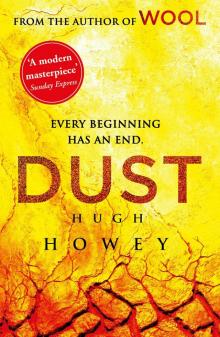 Dust
Dust Molly Fyde and the Land of Light
Molly Fyde and the Land of Light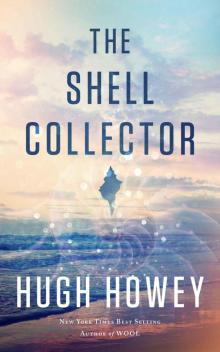 The Shell Collector
The Shell Collector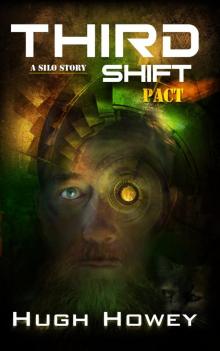 Third Shift: Pact
Third Shift: Pact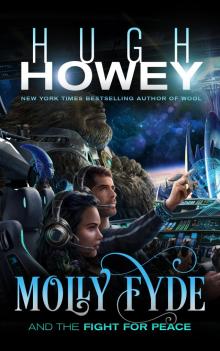 Molly Fyde and the Fight for Peace
Molly Fyde and the Fight for Peace Sand Omnibus
Sand Omnibus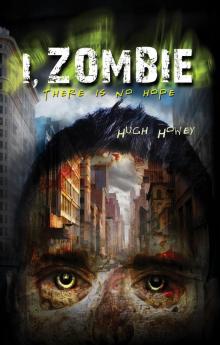 I, Zombie
I, Zombie Second Shift: Order
Second Shift: Order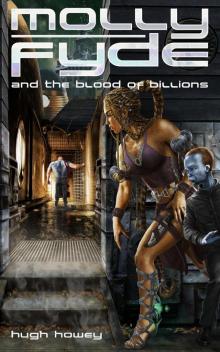 Molly Fyde and the Blood of Billions
Molly Fyde and the Blood of Billions The Hurricane
The Hurricane The Box
The Box Glitch_A Short Story
Glitch_A Short Story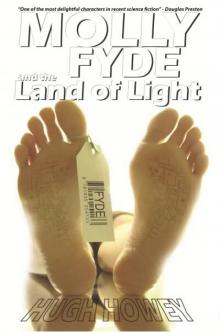 Molly Fyde and the Land of Light tbs-2
Molly Fyde and the Land of Light tbs-2 Machine Learning
Machine Learning Resist
Resist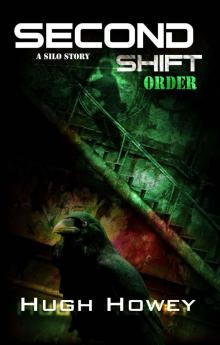 Second Shift - Order (Part 7 of the Silo Series) (Wool)
Second Shift - Order (Part 7 of the Silo Series) (Wool)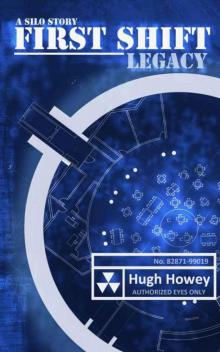 First Shift - Legacy s-1
First Shift - Legacy s-1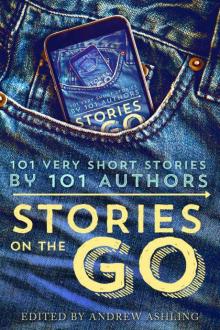 Stories on the Go: 101 Very Short Stories by 101 Authors
Stories on the Go: 101 Very Short Stories by 101 Authors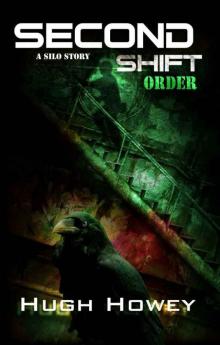 Second Shift - Order s-2
Second Shift - Order s-2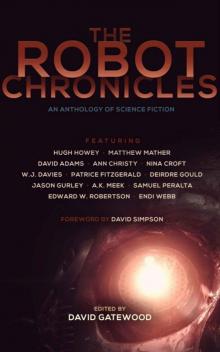 The Robot Chronicles
The Robot Chronicles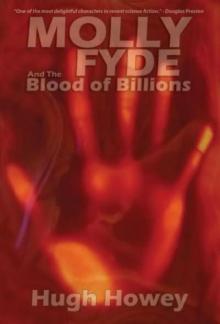 Molly Fyde and the Blood of Billions tbs-3
Molly Fyde and the Blood of Billions tbs-3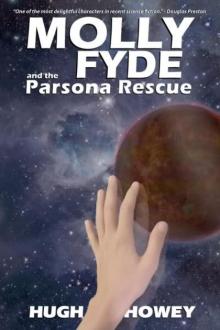 Molly Fyde and the Parsona Rescue tbs-1
Molly Fyde and the Parsona Rescue tbs-1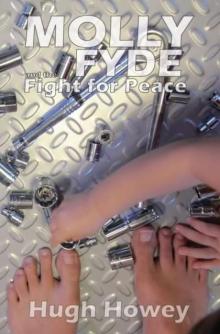 Molly Fyde and the Fight for Peace tbs-4
Molly Fyde and the Fight for Peace tbs-4 Sand
Sand The Walk Up Nameless Ridge (Kindle Single)
The Walk Up Nameless Ridge (Kindle Single)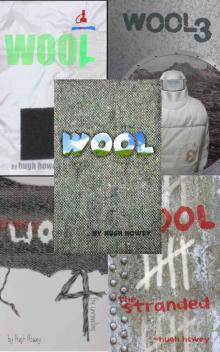 Wool Omnibus Edition (Wool 1 - 5)
Wool Omnibus Edition (Wool 1 - 5)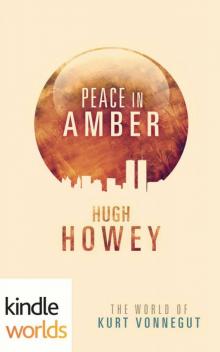 The World of Kurt Vonnegut: Peace in Amber
The World of Kurt Vonnegut: Peace in Amber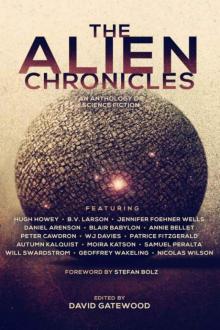 The Alien Chronicles
The Alien Chronicles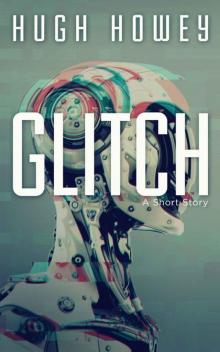 Glitch: A Short Story (Kindle Single)
Glitch: A Short Story (Kindle Single)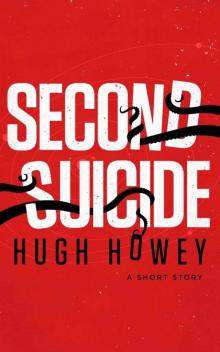 Second Suicide: A Short Story (Kindle Single)
Second Suicide: A Short Story (Kindle Single)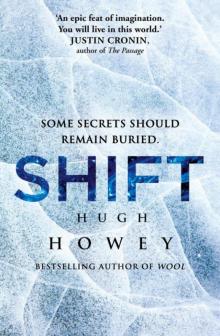 Shift (silo)
Shift (silo)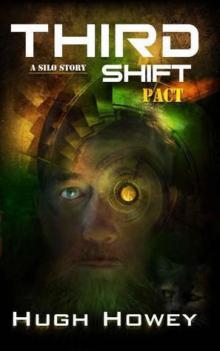 Third Shift - Pact
Third Shift - Pact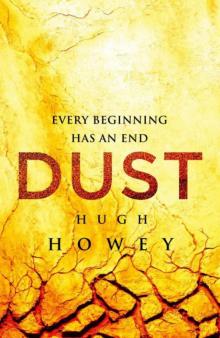 Dust s-9
Dust s-9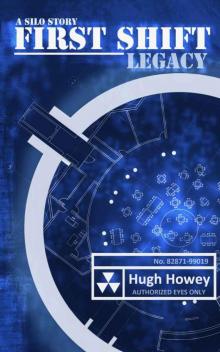 First Shift - Legacy (Part 6 of the Silo Series) (Wool)
First Shift - Legacy (Part 6 of the Silo Series) (Wool)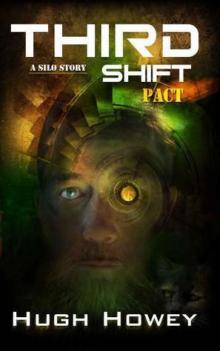 Third Shift - Pact s-3
Third Shift - Pact s-3 Sand: Omnibus Edition
Sand: Omnibus Edition The Box: A Short Story
The Box: A Short Story